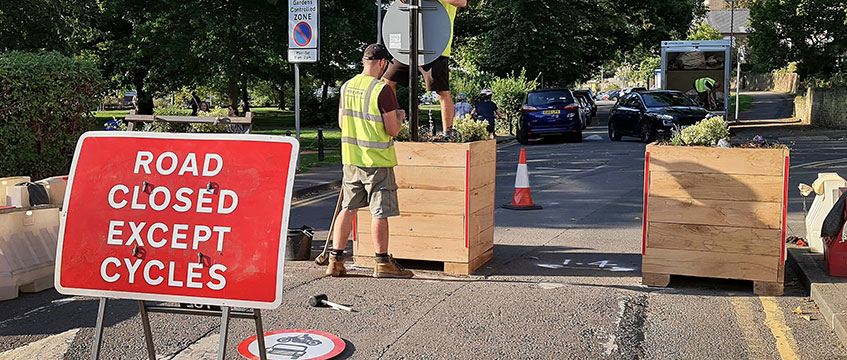The High Court in London has rejected a legal challenge to the low-traffic neighbourhood (LTN) scheme set up by the London Borough of Lambeth.
LTNs are roads and streets where the movement of cars is restricted to promote walking and cycling and discourage motorists. Councils across the country have been setting up LTNs during the pandemic. When set up via experiment traffic orders (ETOs), residents have six weeks to bring a legal challenge if they want to oppose the decision.
While LTNs are very popular with some residents, they are deeply disliked by others and more than a dozen court challenges are currently going through the court system.
The current case was brought by Lambeth resident Sophia Sheakh who, due to a lung condition is disabled and heavily reliant upon car transport.
At a hearing earlier this month, her legal team argued that she and others similarly dependant on travel by car have suffered disproportionately from the introduction of LTNs within Lambeth, because the displacement of traffic from within the LTNs to the roads outside them leads to a build-up of traffic outside them and consequently increased journey times, added stress and loss of quality of life.
According to today’s judgment, she argued that Lambeth has overlooked this in the course of developing its thinking and discussing it locally, to the point where decisions to make orders creating the three relevant LTNs were unlawful and the orders should be quashed.
Lambeth disputes this and maintains that it has complied with all its legal obligations in the course of deciding to make the orders challenged.
And in a judgment handed down today, High Court judge Mr Justice Kerr backed the council, rejecting all of her grounds of claim.
In his ruling he drew particular attention to a suggestion by Sheakh’s lawyers that the the council is stating that the LTAs are, at the moment, experimental as a way of avoiding proper public consultation.
“I do not think there is any merit in these arguments. I am not prepared to draw the inference that the experimental nature of the LTNs and the ETOs made to maintain them is other than genuine,” he said.
“First, the ETOs are not shown to be other than genuine by the fact that two of the three LTNs began life as the product of TTOs rather than ETOs. The former are a recognised way of introducing urgent change and the government specifically commended the use of TTOs as a way to respond to the urgency of the situation in May 2020 when public transport was largely shunned and cycling and walking in need of encouragement.
“Lambeth’s documents, referred to above, are replete with references to the experimental nature of the LTNs. I am content to take those documents at face value and to believe that they mean what they say,” he said.
Claire Holland, leader of Lambeth Council, said she welcomed the ruling. “The council has set out from the outset that implementing measures to make our streets safer and healthier was fully in line with statutory guidance and national policy objectives. We rejected any suggestion that these schemes are discriminatory in any way or were installed illegally,” she said.
“The start of the Covid-19 pandemic saw capacity on public transport reduced by up to 80% to accommodate social distancing. With around 60% of households in Lambeth not having access to a car, and with access typically lower for women, Black and disabled residents in particular, we needed to make our streets safer to enable them to walk, cycle, scoot or wheel safely in their local area and access local facilities during the pandemic.”
“We will now redouble our efforts to involve all of our communities in a conversation about how we rebalance our streets so that they are more equal, safer and put people first,” she said.
The Queen on the Application of Sophia Sheakh and London Borough of Lambeth v Sohpia Sheakh and London Borough of Lambeth
Planning Court (Kerr J) 28 June 2021
Mr Tim Buley QC (instructed by Scott-Moncrieff & Associates LLP) for the claimant Mr Tim Mould QC (instructed by Lambeth Legal Services) for the defendant








